Art Fairs
London’s Street Art Fair Moniker Broke Records on Its Opening Night
Works start at just £25 and with the fair’s track record, odds are they’ll soon be worth a lot more.
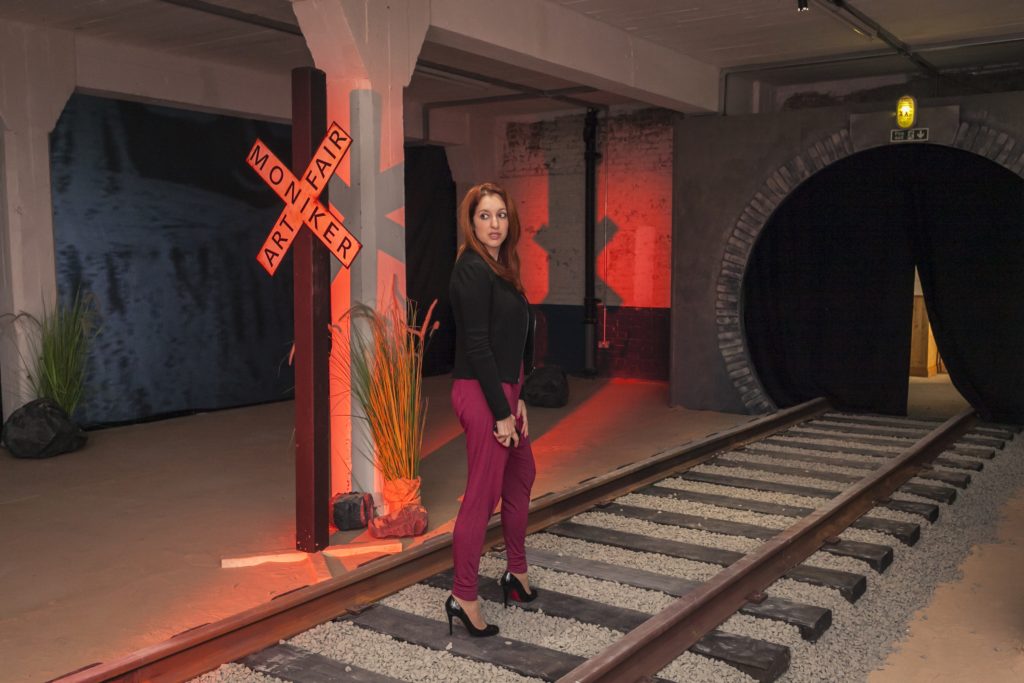
Works start at just £25 and with the fair’s track record, odds are they’ll soon be worth a lot more.

Naomi Rea

Climbing the steps to the top floor of the Old Truman Brewery on London’s Brick Lane, visitors to Moniker Art Fair are handed a chalk pen and invited to leave their own mark on the wall. This is how you know you’re at a street art fair in Shoreditch, and not a white tent in one of London’s royal parks.
This year, Moniker has already reported record-breaking sales figures, with around £300,000 worth of art changing hands yesterday during its preview. “It’s proof that the scene has built its own cult following,” explained director Tina Ziegler, who took over the fair last year. “[Buyers] are unafraid to invest in the scene, largely from the confidence that’s steadily built in urban and new contemporary art.”
In its eighth edition, under Ziegler’s steady directorship, Moniker has tripled in size, taking over the 30,000-square-foot top floor of the brewery and reclaiming dominance from competitor The Other Art Fair. This year, with more than double the number of exhibitors—45 to last year’s 20—Moniker is positioning itself as the world’s largest urban art fair.
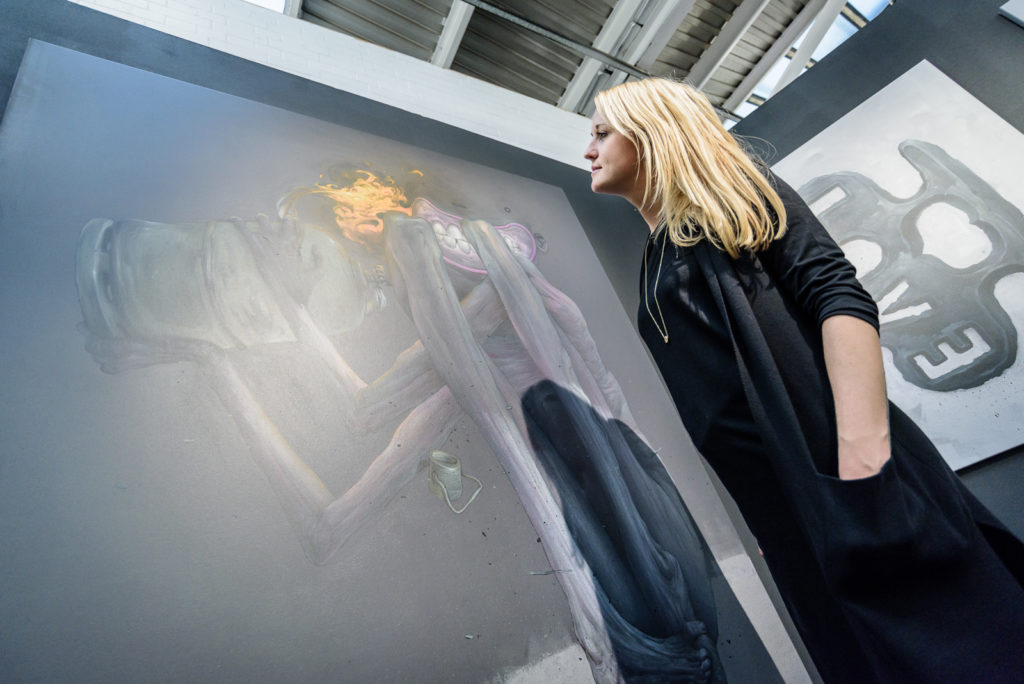
Tina Ziegler. Photo courtesy Moniker Art Fair.
“The urban art market is definitely the fastest-growing contemporary art market that we see, both in audience and engagement, but also just looking at the sales over the past decade,” Ziegler told artnet News.
Industry stars like Banksy, Sterling Ruby, and Shepard Fairey have transformed the movement into an incredible source of value for top collectors, and street art is also wildly popular with the public—Banksy’s Girl With Balloon stencil recently surpassed John Constable’s 1821 landscape, The Hay Wain, as the UK’s most beloved artwork.
This year, the fair’s specially curated section, Transient Tales, opens with a large-scale railway track installation by American documentary photographer and filmmaker Bill Daniel, onto which visitors must climb to access a tunnel leading into the fair—a reminder of the origins of the street art movement in coded exchanges between hobos on the sides of freight trains in America’s post-Depression years, long before Jean-Michel Basquiat ever picked up a can of spray paint.
The theme continues on the other side, with site-specific and solo installations by Labrona, Tim Conlon (aka CON), Alex Fakso, Ian Kual’li, and a loveable cardboard monkey sculpture by Canadian artist Laurence Valieres.
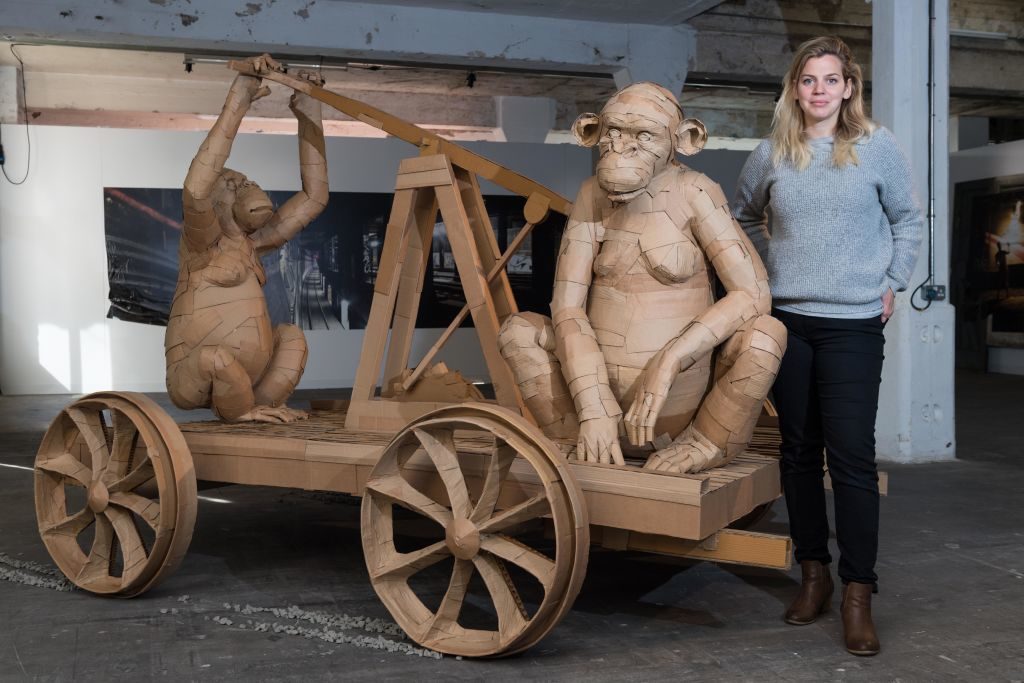
Canadian artist Laurence Vallieres stands with her “Transient Tales” piece at Moniker Art Fair 2017. Photo: Ian Gavan/Getty Images.
Visiting the fair’s exhibition floor, dubbed The Yard, little red dots indicating artworks have already been sold decorate the wall cards. In 2017, Moniker is offering a more international outlook, showing over 100 artists at galleries from as far afield as South Africa’s WORLDART, Japan’s u-k ART, or Paris’s renowned Galerie Itinerrance, which is showing coveted work by Shepard Fairey and Tristan Eaton, as well as rising French star, Bom.K.
Worth mentioning is the vast, eight-stand takeover by leading Los Angeles-based gallery, Thinkspace. In the first five hours of sales, the California gallery reported an income of over £100,000 across its group show and seven solo exhibitions, including the UK debut of Audrey Kawasaki, whose lowbrow artworks command between £15,000-£25,000 on the market, and other stands dedicated to Kevin Peterson, David Cooley, Brian Viveros, and Cinta Vidal.
Other highlights include the showcasings of Croydon’s RISEgallery, street artist D*Face’s StolenSpace, as well as Hong Kong and LA’s Avenue Des Arts, which is making its Moniker debut with works by Pez and Pixel Pancho among its offerings.
Elsewhere, in the fair’s Open Studios program for artists without gallery representation, there are standout booths by Expanded Eye, and SICKBOY, the latter of which examines the increasing difficulty of categorizing the urban contemporary movement in market terms, as many artists straddle the lines between fine and street art, as well as other labels such as lowbrow, or pop surrealism.
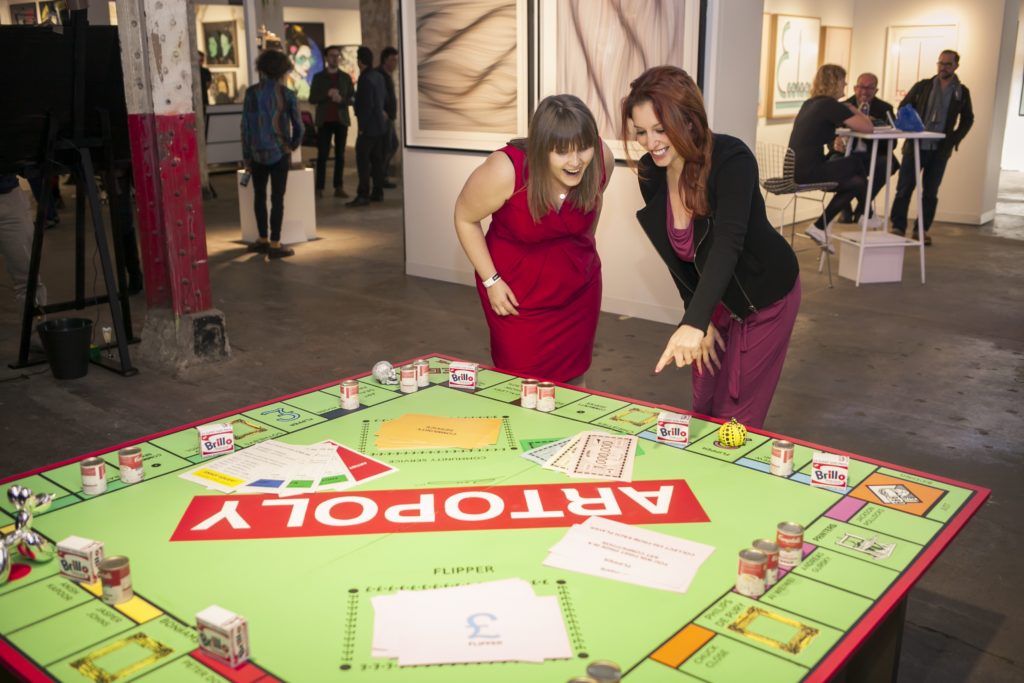
Playing Artopoloy at Stick Together Gallery at Moniker Art Fair. Photo courtesy Moniker Art Fair.
The fair is a lot of fun. Visitors can also see Justine Smith’s amusing money works, play Stick Together’s Artopoly game, or spot up-and-comers at Curious Duke Gallery thanks to the unfailing eye of owner Eleni Duke. Imitate Modern’s stand, titled Re:Creations, is selling remakes of iconic artworks with an urban twist and the new takes on Rothko, Van Gogh, and Warhol are hilarious.
And as far as investment goes, the fair’s track record speaks for itself. Stik, the architect behind London’s beloved forlorn stick figures (who is showing at Graffik Gallery’s stand alongside Banksy this year) was selling original work back at the fair in 2011, a £1,000 investment that would net £20,000 in today’s market. Other works by C215 from 2012 have made returns of nine times their original sale price, and the German graffiti duo Herakut, who first showed at the fair in 2010, have been steadily and quietly building their market. This year original work by artist-to-watch Ally McIntyre is selling at Jealous Gallery.
What’s refreshing about Moniker is that all the work on show has been carefully curated with both collectors and visitors in mind. “No two galleries can show the same artist, so every single stand becomes very unique, and we are trying to not create competition within our own fair,” explained Ziegler. Additionally, each exhibitor may only display a maximum of five artists. “We want to ensure that as a visitor, you come to see Moniker Art Fair and you get to see a really diverse and very international reflection of what’s going on today in the contemporary urban art market.”
Moreover, all of the artists exhibiting at Moniker have a track record of selling, and a growing collector base, which Ziegler tells artnet News is unlike other fairs out there, which sell stands to anyone. “Ninety percent of the artwork here, I would guarantee is going to go up in value over the next five years,” said Zielger, who has this year inaugurated a VIP program to cater to more established collectors.
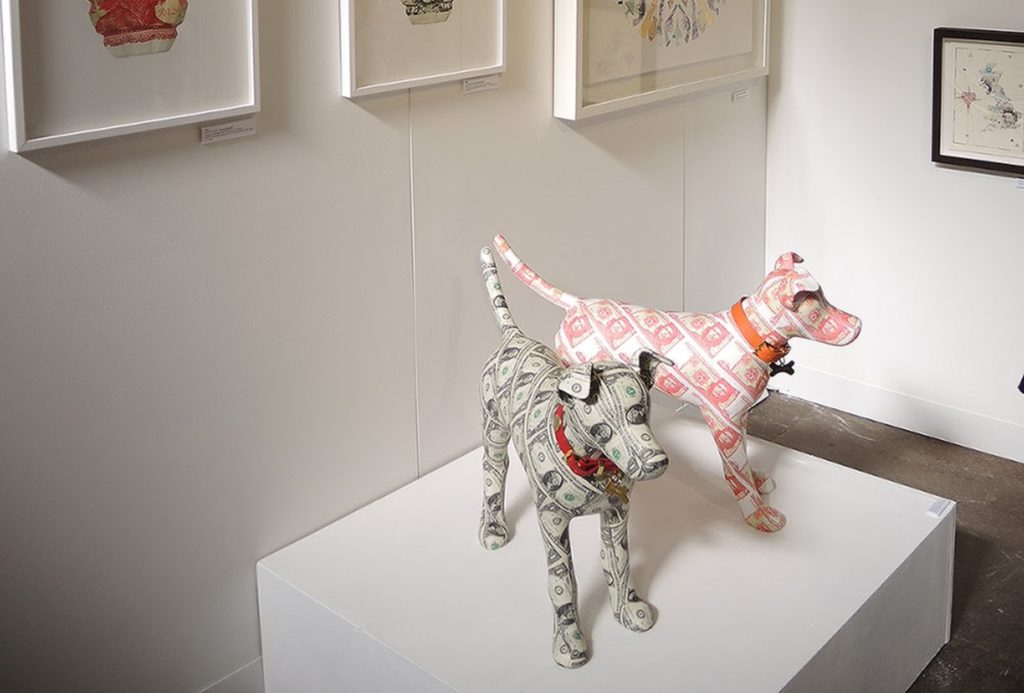
Justine Smith’s gallery installation at Moniker Art Fair. Photo courtesy Moniker Art Fair.
So what caused this growth in urban art collecting both at home and internationally? Some suggest its popularity with investors came alongside museums beginning to show street art. There’s now a dedicated museum to the movement open in Berlin, and a landmark Basquiat show is currently at London’s Barbican, the irony of which Banksy didn’t hesitate to comment on.
Zielger also credits the urban art market’s expansion to support from local governments, city planners, and property developers for adding color to the streets. “It’s really beneficial for the local community and obviously, it’s essentially advertising isn’t it? When you have something on the street, or on a billboard or on the side of a building, everybody in the city gets to see it so they’re nuts to get engaged with that.” Also pivotal to the movement’s growth has been its popularity on social media; unsurprisingly, street art is the most Instagrammed art form.
But the fair, true to the movement’s anti-establishment roots, is accessible to those entering the market, too. Tickets to moniker start at £8, which is significantly lower than Frieze and, to give it to you straight, most other things in London. Art works start at limited-edition print releases from as low as £25, over 20 of which are happening at the fair this year, including prints by Eeelus, the Chapman Brothers, and David Shrigley. “The ethos of our sales is trying to make the art world as accessible as possible,” said Ziegler. “The urban contemporary art movement’s motivation from day one was to put artwork in the public domain.”
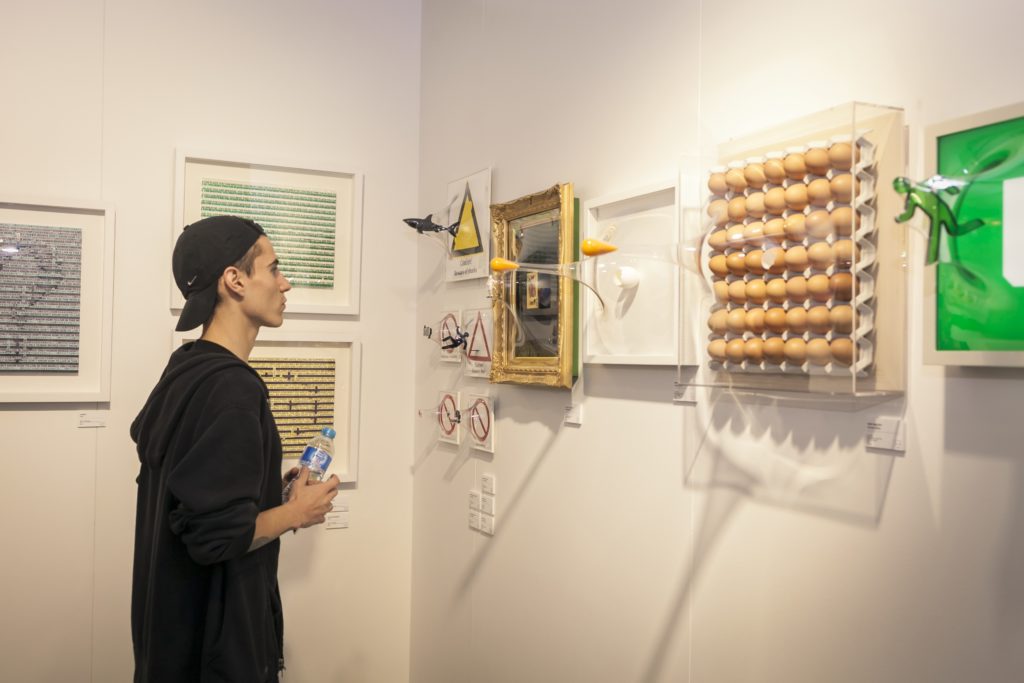
A visitor enjoys the artwork. Photo courtesy Moniker Art Fair.
Moniker will also reconnect with its street origins by commissioning new public murals around the fair. Watch out for work by Dulk (Spain), Telmo Miel (Netherlands) whatisadam (Canada) and rising London star Ben Slow, who are all, it is interesting to note, also showing work indoors in a testament to the diversity of environment and materials these artists must master.
Earlier this summer, Ziegler announced that Moniker New York will have its inaugural edition at the Greenpoint Terminal Warehouse in Brooklyn from May 3 to 6, to coincide with Frieze New York, and she hopes the art fair will continue to grow over the next five years.
“I’ve been a champion of this movement since I was about 15 years old, I’ve been working with urban art, street art, long before it was popular, so I really feel a responsibility to showcase the artists and the galleries in a way that really does them justice,” she said. “I wanted to show the more traditional fine art market, which has frowned upon the street art market for a while, that we’re here to stay, and we’re not going anywhere, and there’s real talent to be had in this movement, and it should be looked at by major collectors and recognized as an established art movement that deserves their attention.”
Moniker London is at The Old Truman Brewery, 91 Brick Lane, London E1 6QL until Sunday 8 October.